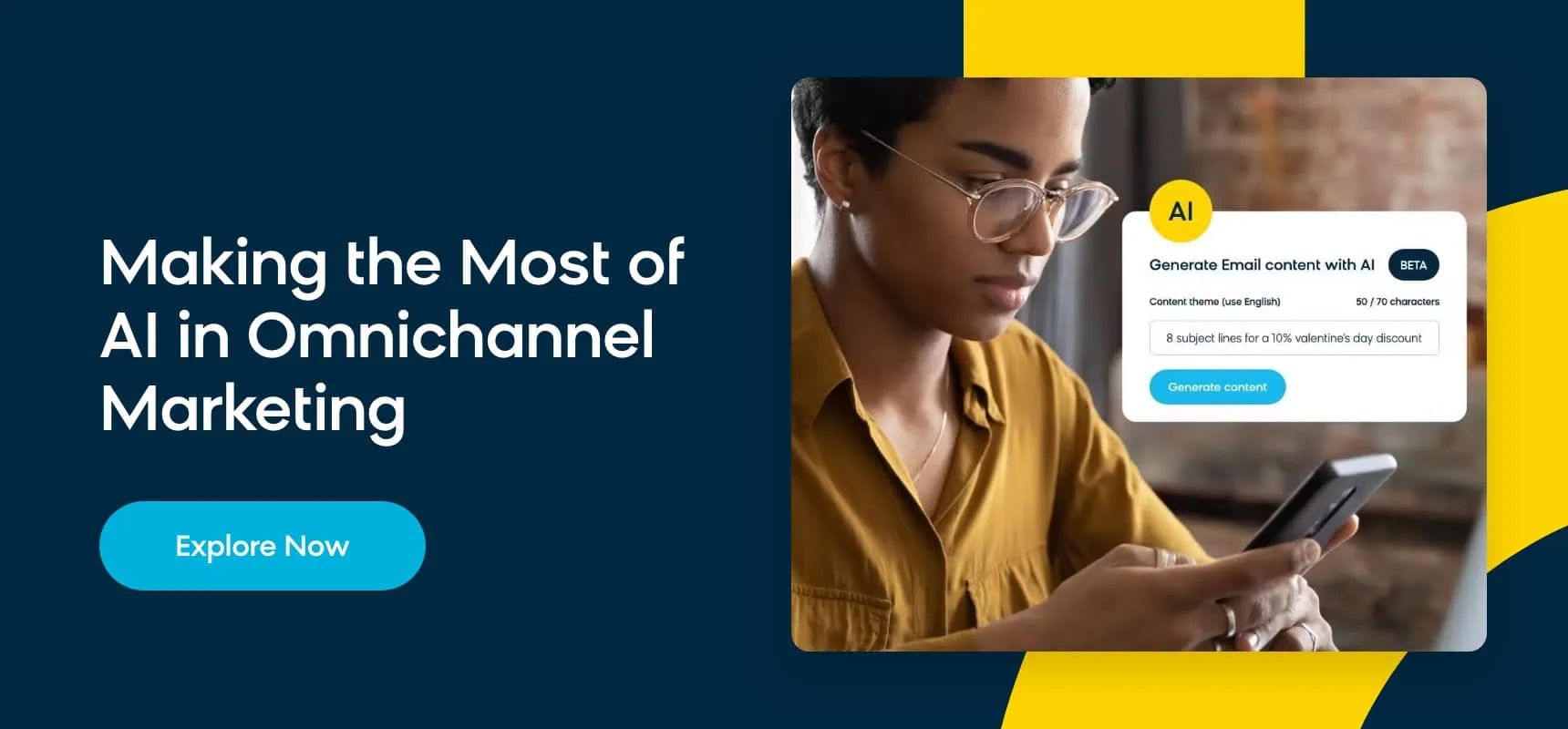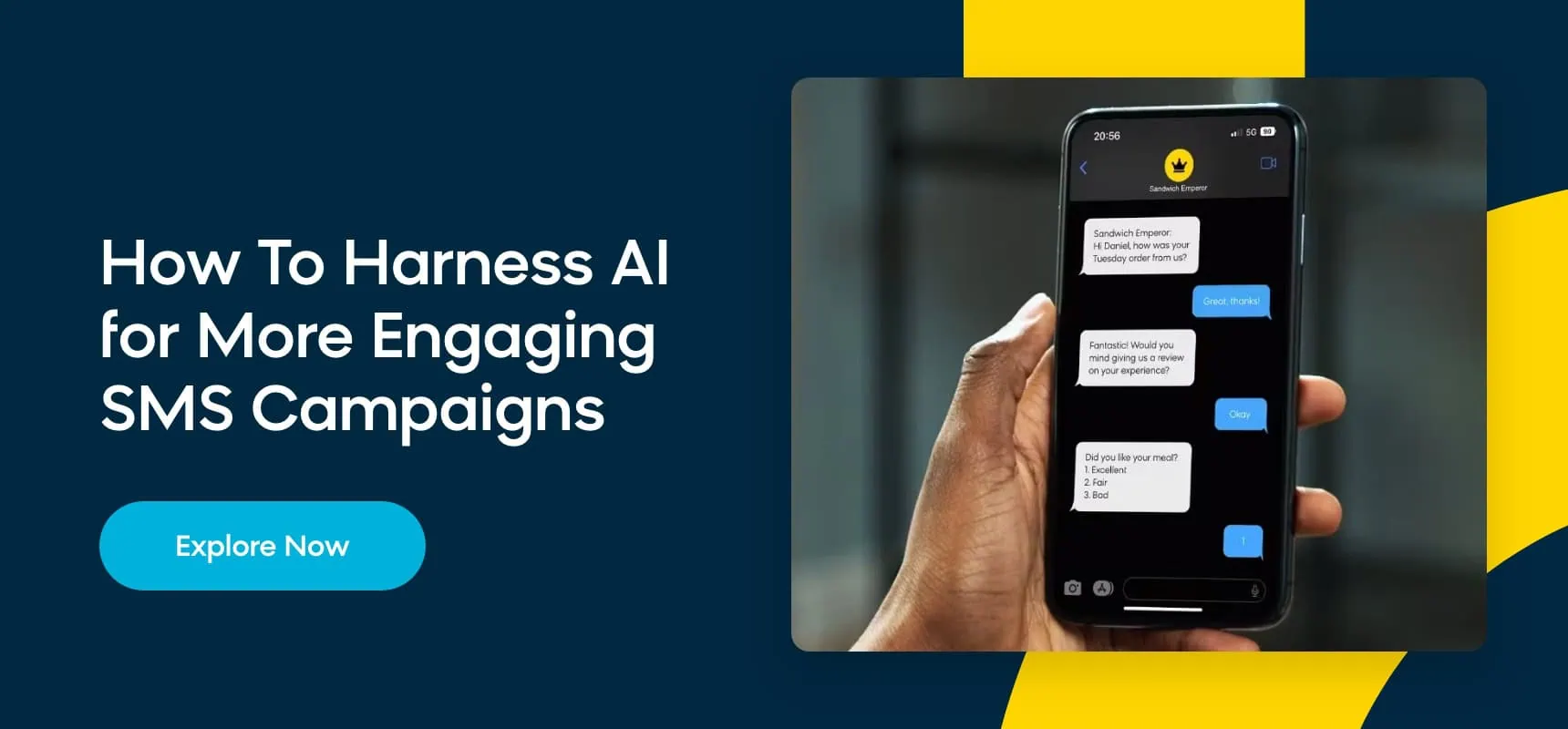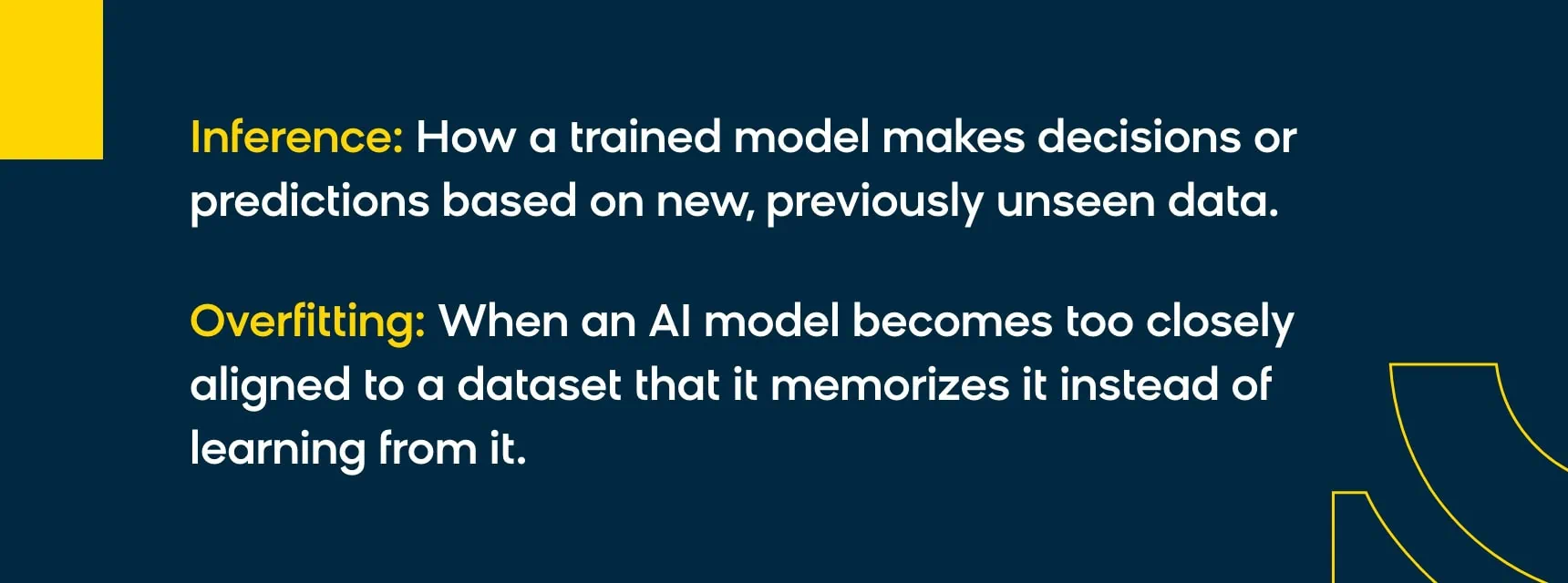The transformative potential of artificial intelligence (AI) is a topic that continues to permeate the business world. But it’s fair to say that not all AI projects are created equal. This comes down to a simple reason: Behind any powerful AI system lies a rigorous process known as AI training.
This article provides a breakdown of what it means to train an AI for business, explains what’s involved in training AI and why it’s important, and outlines best practices for training AI. Read further to embark on your AI training journey!
What Is Training an AI?
Training AI is about teaching it to correctly interpret data and learn from it in order to perform a task accurately. At its core, training an AI is similar to how humans learn through experience. Imagine if a child is learning how to recognize different animals. By showing the child different examples, they learn how to differentiate between them. Similarly, an AI system can be trained with multiple images of different animals and learn to recognize the distinguishing features of each.
In a business context, the data used for training AI can range from customer interactions and sales figures to more complex datasets such as market trends or user behavior on digital platforms.
So, why would a business want to train an AI? For one, every business is unique, and by training AI on your specific data, it’ll better understand and cater to the peculiarities of your business. Well-trained AI also helps businesses improve decision-making in order to reduce costs and drive operational efficiency and growth. Furthermore, AI can be trained to understand customer behavior, leading to more enhanced and personalized customer experiences as well as optimized ecommerce merchandising strategies.
Let’s dive deeper into some of the benefits of training AI models.
Tone of Voice AI
More recently, the rise of generative AI has led to concerns about marketing copy sounding generic, off-brand, and unoriginal. But AI can be trained to pick up on the nuances of your brand voice, which ensures a consistent and unique brand representation across all platforms. Whether a customer is reading website content or email communications, tone of voice AI facilitates a coherent and aligned customer experience.
By feeding an AI system with brand-specific content and guidelines, and continuously refining its outputs, businesses can ensure their AI tools, especially chatbots, resonate with the brand’s voice, making engagements feel more authentic and on-brand. This consistency not only strengthens brand identity but also fosters trust and a sense of familiarity among customers.
Personalized Website AI
Training AI to personalize a user’s website experience can dramatically enhance engagement and conversion rates. By analyzing individual user behavior, preferences, and past interactions, AI can curate custom product recommendations and offers, and even adjust website copy to resonate more personally with the user. This tailored approach not only makes browsing more relevant and enticing for visitors but also fosters a deeper connection between the brand and its customers. Implementing such personalization involves collecting and processing user data, refining AI algorithms based on feedback, and continuously updating the system to adapt to changing user preferences and behaviors.
Optimized Send Time
Training AI to automate the sending of marketing emails and messages at optimal times to specific audience segments can significantly boost engagement and conversion rates. By analyzing user behavior, time zone data, and previous engagement metrics, AI can pinpoint the most effective times to reach each audience segment. This ensures that messages are not only timely but also relevant, leading to more opened emails and positive user actions.
To implement this, businesses would need to feed the AI system with historical engagement data, continuously refine its predictions based on new interactions, and integrate it seamlessly with their email marketing platform to ensure consistent and efficient communications.
How Do I Learn To Train AI?
Navigating the world of AI can seem daunting, especially when it comes to training these digital minds. If you’re looking to harness AI’s power, there are some core components you need to grasp. In this section, we’ll delve into the foundations of training AI, including the essential data required, the intricacies of developing AI and machine learning models, the hardware and software that power the process, and the role of AI developers in bringing these sophisticated systems to life.
Data for Training AI
As the old computer science adage goes: garbage in, garbage out. When it comes to successful AI training, it all starts with the data. High-quality data ensures that AI models can learn patterns, make accurate predictions, and offer reliable solutions. On the other hand, poor data can lead to biased, inaccurate, or irrelevant outputs, ultimately compromising the efficacy and trustworthiness of the AI system. The quality of the output therefore is contingent on the quality of the input data.
With this in mind, there are several data collection and data preparation best practices you should consider for training AI models:
- Understand the goals of your AI project early on in order to collect the right data
- Choose an appropriate data collection method that best suits your project
- Evaluate the collected data to ensure its quality and relevancy; data processing ensures the data is cleaned and enhanced to improve the entire dataset
- Accurate data annotation involves labeling the data to make it machine-readable — an important step in ensuring the quality of your training data
Training AI Models
An AI model is a tool or algorithm based on a set of data that enables it to recognize patterns, arrive at a decision, or make predictions. Selecting the right model architecture and algorithm is an important step in training your AI as it determines your model’s performance and accuracy.
There are different types of models like decision trees, linear regression, neural networks, random forests, support vector machines, machine learning, deep learning, and more.
You might be wondering what the difference is between machine learning and deep learning models. In simple terms, machine learning is a subset of AI and its algorithms can learn from and act on data. Deep learning is more specialized than machine learning and uses multilayered neural networks to analyze various factors. Think of machine learning as the broad approach to feeding data and making predictions, while deep learning is more granular, mimicking the human brain’s structure and function to process data in a more intricate way.
Your choice of AI model will depend on a number of factors such as the complexity of the project, the type of data and computational resources available, as well as the level of accuracy and timeframe desired.
Hardware and Software
To successfully train artificial intelligence models, you’ll need a combination of robust hardware to handle the computational demands and sophisticated software.
Hardware Essentials for Training AI:
- Graphics processing units (GPUs): Deep learning thrives on vast computational power. High-performance GPUs, especially those designed for AI tasks, can reduce training times dramatically by handling the matrix calculations integral to deep neural networks.
- Tensor processing units (TPUs): Developed by Google, TPUs are hardware accelerators specialized for deep learning tasks. They are designed to speed up the rate at which data is processed, making them particularly effective for training large models.
- RAM and storage: Adequate memory ensures the smooth running of operations, especially when dealing with large datasets. High-speed SSDs or NVMe drives are recommended for faster data read/write speeds.
- Specialized hardware: For those seeking top-tier performance, specialized equipment like the Nvidia Tesla V100 GPU and the DGX1 server are paramount. While these are expensive, their unparalleled performance can be indispensable for intensive AI projects.
- Cloud computing: Services like AWS, Google Cloud, and Microsoft Azure offer specialized AI training hardware on the cloud, allowing scalability without upfront investments in physical infrastructure.
Software Essentials for Training AI:
- Cloud-based automated machine learning software: Many cloud providers offer AI software solutions. Microsoft’s Machine Learning Studio, Google’s Cloud AutoML, and AWS SageMaker are some of the prominent ones, enabling users to utilize the cloud infrastructure cohesively with their AI development environment.
- Deep learning frameworks: TensorFlow by Google and PyTorch are among the popular deep learning software. These frameworks provide predefined structures and functions, easing the process of designing, training, and implementing deep learning models.
- Bloomreach Engagement: In the commerce world, Bloomreach stands out when it comes to optimizing digital experiences using AI. The platform combines AI-driven personalization, advanced search functionalities, and strategic product recommendations, enabling businesses to tailor customer experiences and maximize customer engagement.
AI Developers
AI developers are becoming the new gold — rare and in soaring demand. As AI permeates every industry, the need for professionals who can harness its power grows exponentially. But it’s not just about filling a vacancy; it’s about finding the right fit. The realm of AI is vast, intricate, and ever-evolving. Having a developer isn’t enough; you need someone who’s not only familiar with the current state of AI but also has an eye on its horizon. Investing time in recruiting a seasoned AI developer who’s deeply entrenched in the industry’s dynamics can be the difference between merely adopting AI and maximizing its full potential. Such a developer won’t just code — they’ll guide, strategize, and help you navigate the intricate maze of artificial intelligence, ensuring your project is both innovative and future-ready.
Three Steps for Training AI
Broadly speaking, training AI can be broken down into three main steps: initial training, validation, and testing.
Training
Training AI involves feeding data into an AI model, which then makes decisions and predictions based on the input it receives. It’s only by training AI that you can ensure that your AI will perform the way it’s intended. After training AI on a set of data, it becomes capable of inference, the process by which a trained model makes decisions or predictions based on new, previously unseen data. In other words, inference is applied to learned knowledge in new situations.
In the context of machine learning and artificial intelligence, “inference” refers to the process by which a trained model makes predictions or decisions based on new, previously unseen data.
Initial training is important in order to surface errors and avoid overfitting, which happens when an AI model becomes biased and restricted to the training data. This happens when the AI model is so closely aligned with the dataset that it memorizes it rather than learns from it. If overfitting occurs, the AI would be unlikely to interpret new data correctly.
Validation
The next step is training validation, which is about checking if the AI performs how you’d expect based on the first set of data provided. The AI model is verified by running validation data against the trained model. Validation involves assessing the model’s performance based on metrics such as accuracy, precision, recall, and F1 score (machine learning evaluation metrics). New variables may need to be adjusted to improve the AI model algorithm at this stage. Once it has passed the validation stage, the system can be tested with real-world data.
Testing
This step involves giving the AI new data with fewer prompts to see how it performs. You test on a dataset with no tags or labels that the AI model hasn’t seen before to see how it would perform in a real-world application. The purpose of a test set of data is to identify overfitting. A model that performs well on training data but poorly on test data is likely overfitting, meaning it has memorized the training data rather than learned the underlying patterns.
After this initial assessment, steps one and two can be repeated many times over.
So there you have it. To ensure the effectiveness and reliability of AI systems, it’s best practice to meticulously follow the three pivotal steps of initial training, validation, and testing, regularly revisiting them to optimize performance and guard against pitfalls like overfitting. With AI training taken care of, you can start putting your AI model to work!
The Future of AI Training
Keeping a close watch on AI advancements is not an option but a necessity. The rapid evolution of AI training methodologies and tools will dictate not only how businesses operate but also how they compete, innovate, and grow.
Training an AI isn’t just about leveraging cutting-edge technology, however. It’s about equipping your business with a tool that learns, adapts, and evolves with your needs. At Bloomreach, we’ve trained our AI on one of the largest ecommerce datasets out there, so you get fully integrated AI with all of our products: Engagement for omnichannel marketing automation, Discovery for product discovery, and our upcoming Clarity solution for conversational shopping.
Learn more about Loomi, the AI that powers the top ecommerce brands out there, and how you can use our AI to give your business a competitive edge.




















